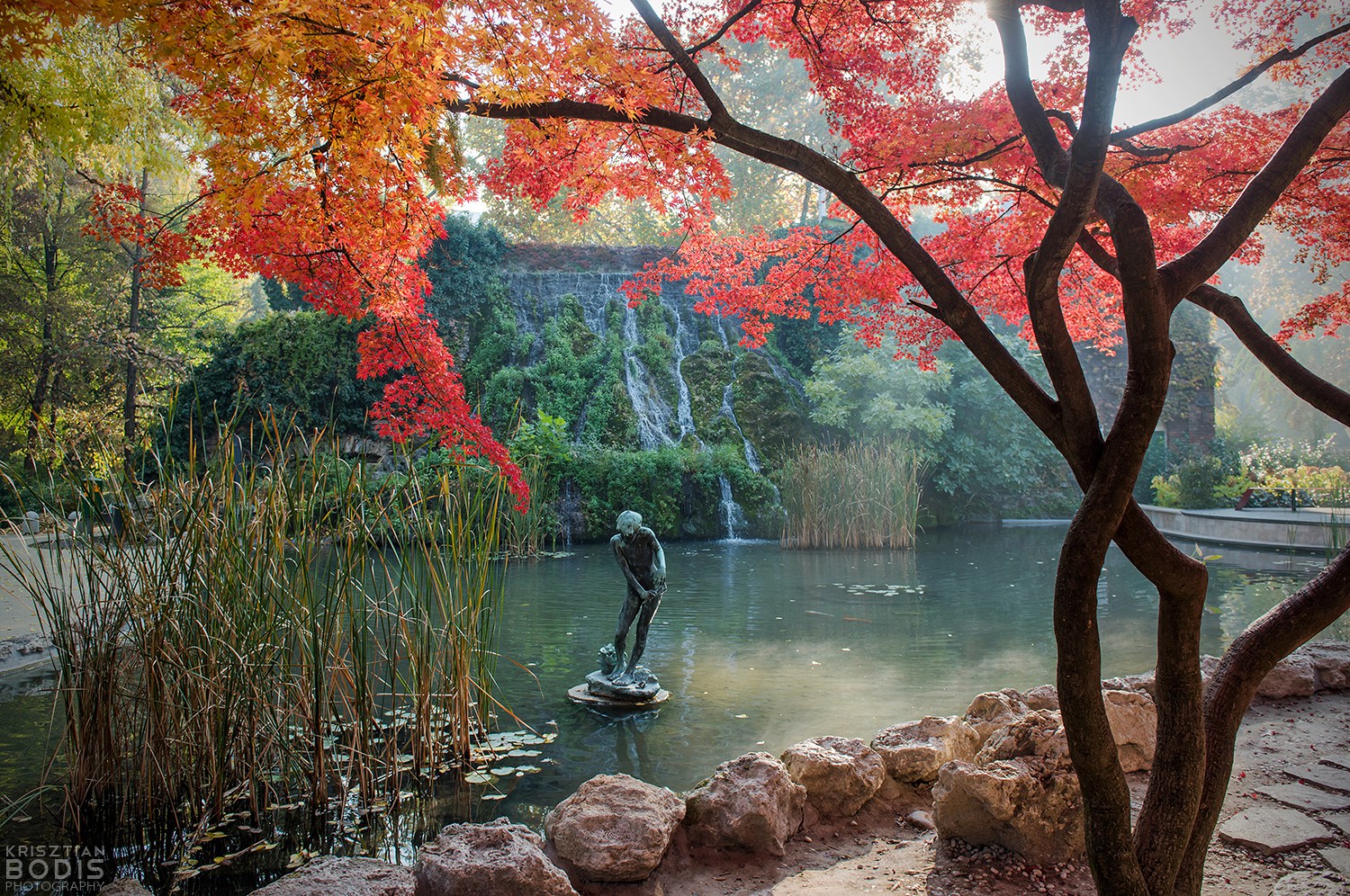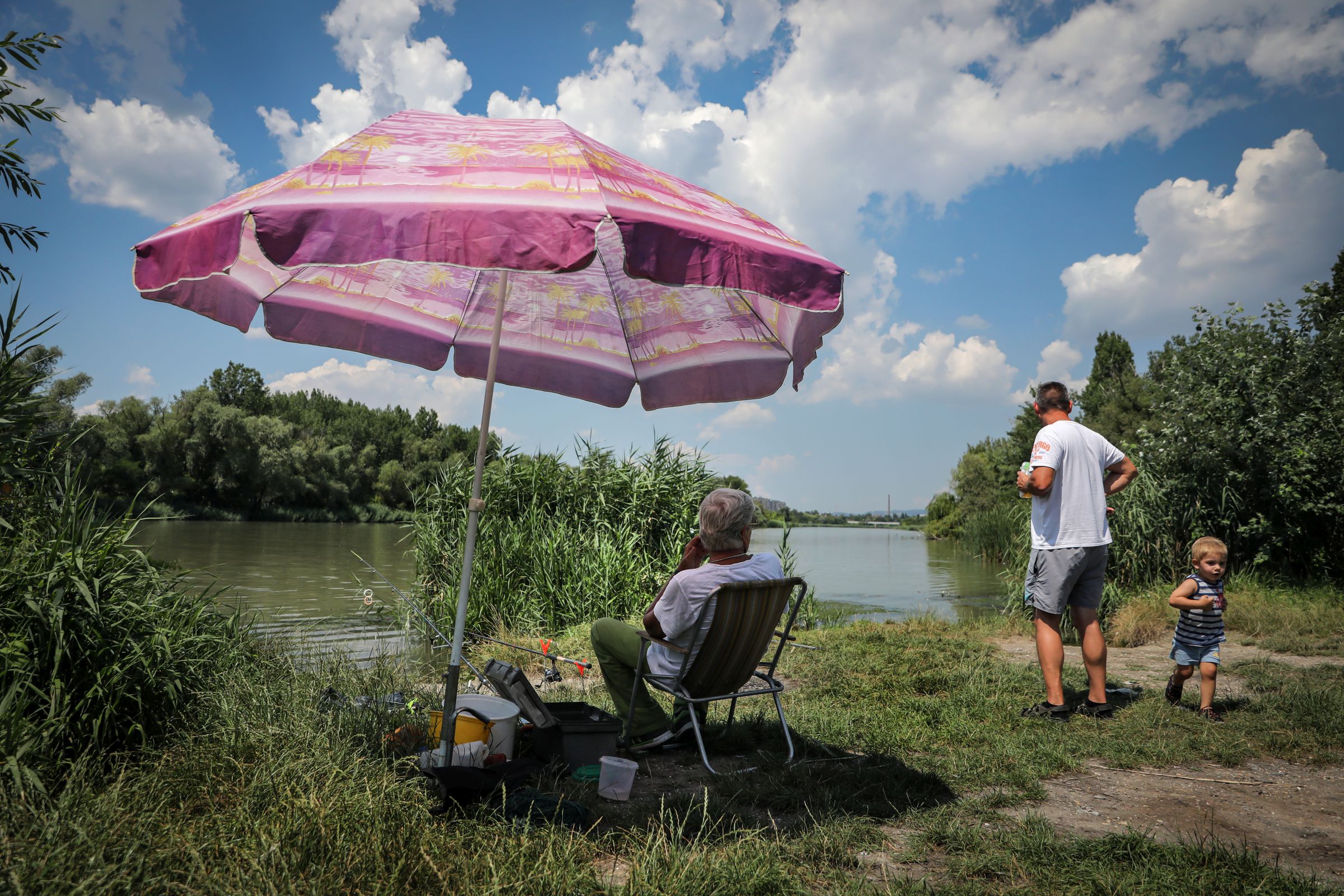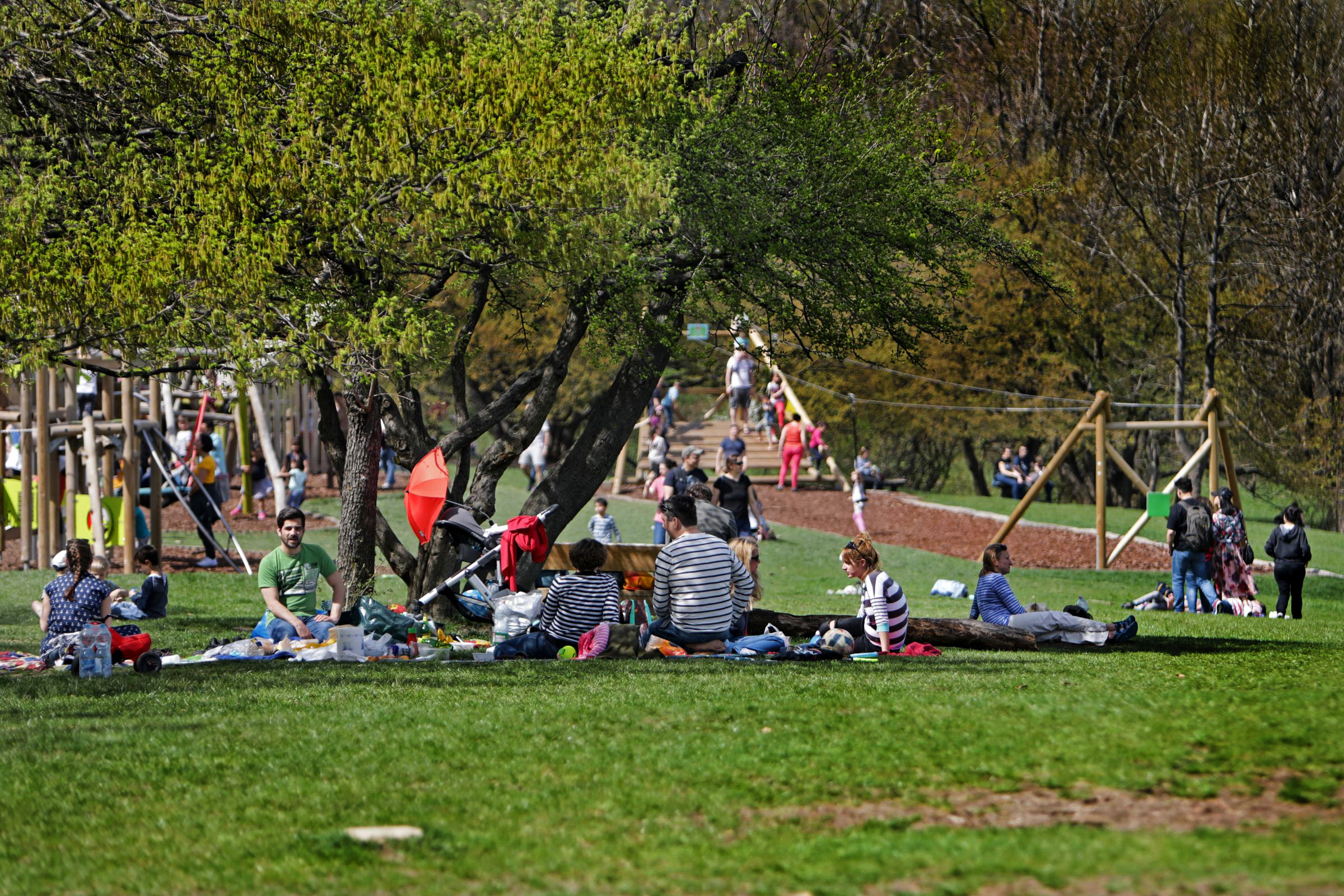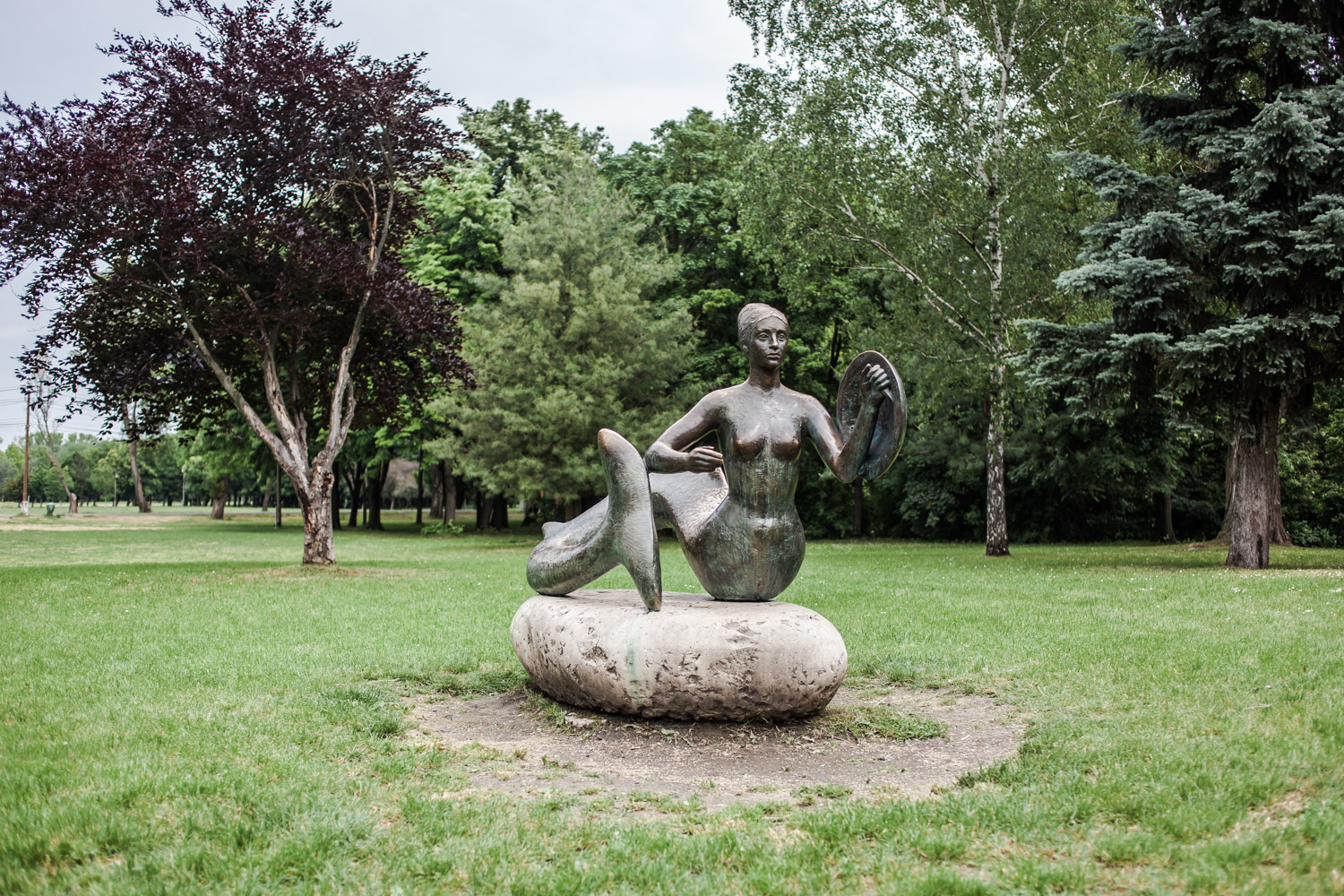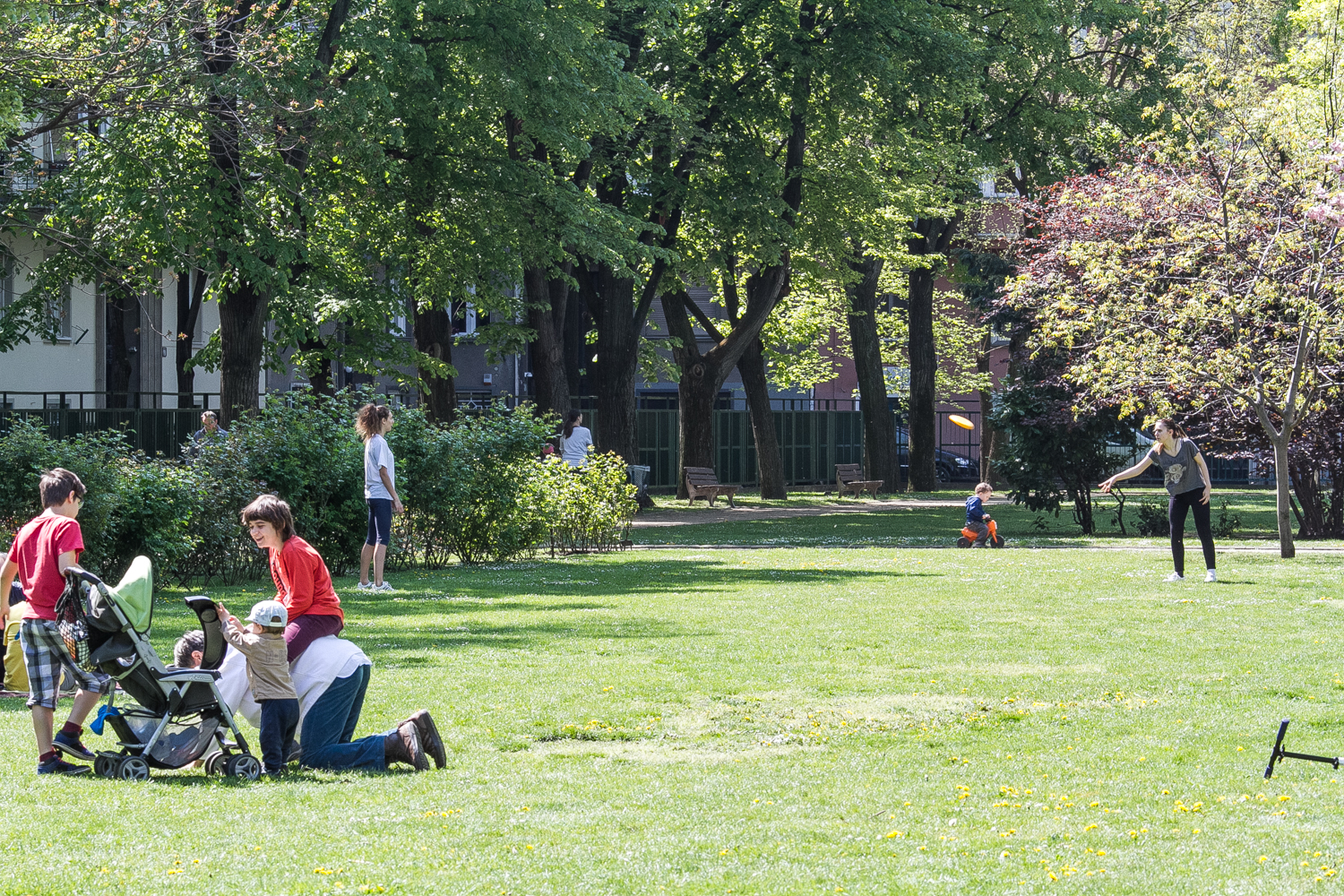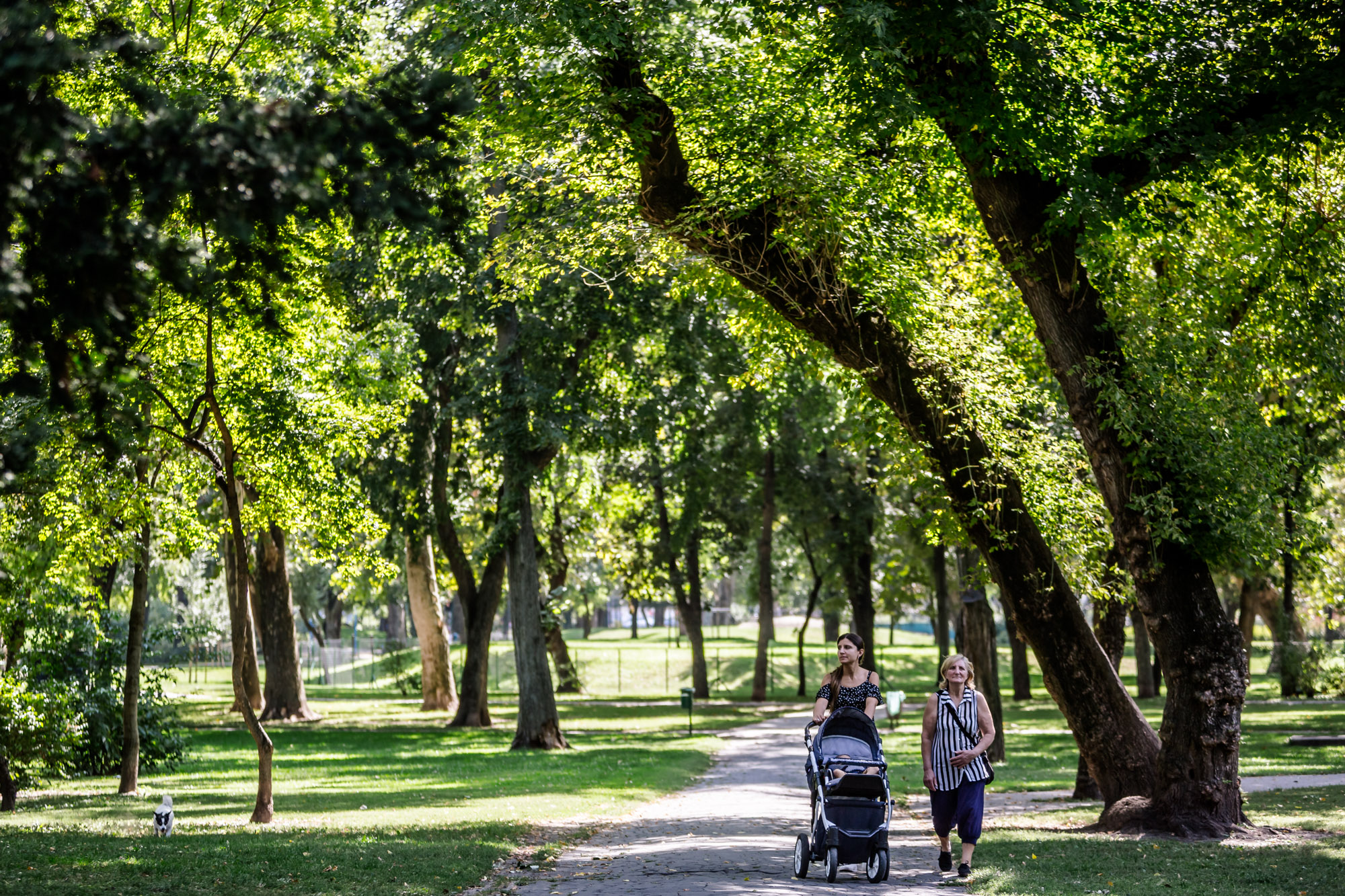One of Europe's greenest capitals, Budapest has an island dedicated to relaxation right in the middle of it and a large park full of sports courts near the centre. Here we present the many attractions of Margaret Island and City Park, and show you the lesser-known getaways where you might find an outdoor gym, a historical site or newly opened craft-beer bar.
1/11
Bikás Park
Growing
in popularity since it gained its own metro station on green line 4, Bikás Park
is one of Budapest’s top recreational areas for outdoor exercise. One of the city’s
most active basketball communities convenes here, and you’ll also find tennis
courts, jogging courses for runners on two legs and four, a stationary
bike, lat-pulldown machines and other contemporary facilities more
typically found in upscale gyms. If fitness takes second place to beer, craft
experts Jónás have recently swapped a terrace by the Danube at Bálna Budapest
for a spot by the lake in in Bikás Park.
As well as pouring sought-after variations of the Reketye label, Zoli
Reketye-Trifán and crew will be putting on events and entertainment.
2/11
Margaret Island
Margaret
Island (Margitsziget) is the green heart of Budapest. It lies in the
middle of the Danube between Margaret
Bridge and
Árpád Bridge, equally handy for those in Pest and Buda. Apart from a couple of
hotels and sports facilities, there are no buildings on the island – it’s a
huge recreational space with promenades and benches, cycle paths and a jogging
track, great for a date or a picnic. Here is where you’ll find the Hajós Alfréd
National Sports Swimming Pool, the popular Palatinus lido, a petting
zoo, a musical fountain and a
Japanese garden. Few cars are allowed – the island is served by the No.26 bus
from Nyugati station, and it has its own stop on the frequent 4/6 tram route,
halfway along Margaret Bridge. All kinds of bikes, tandems and pedalos can be
hired. Towards the north end of the island, in the shadow of the Water Tower,
an open-air concert venue operates in summer for mainstream entertainment.
Close by, the ruins of a medieval Dominican convent are historically linked to
former resident Margaret, daughter of Béla IV, after whom the island is named.
3/11
Molnár Island
Molnár Island lies on
the Ráckeve branch of the Danube, on the north-eastern side of Csepel.
Although it’s a short journey from the city centre, you soon forget about the
hustle and bustle of the capital while you spend time amid peaceful,
romantic nature. Dating back to the 1800s, it takes its name from the many
mills that once operated here – molnár meaning ‘miller’. Since the
mid-1960s, more and more holiday properties have been set up in these
bucolic surroundings, and with them, an infrastructure. There’s plenty to do
around here: you can hike, cycle, row, feed the ducks, go fishing or
simply just sit on a bench and admire the picturesque landscape. A fairy garden, a leisure attraction in the southern part of the island, is ideal for smaller visitors.
5/11
Népsziget
Still
commonly referred to as Mosquito Island and therefore left to its own devices, Népsziget has gained a certain hip cachet thanks to the bohemian,
dog-friendly bars to have opened here in recent years, most notably Kabin, the Sziget Sörkert and a few others, offering a lost-in-the-woods feel, often
with Danube views. The island was once connected to Újpest in the 1830s but a part still belongs to District XIII. There is also a riding hall, a dog school and a goat farm on the island, much of which is still abandoned –
perhaps not for much longer.
6/11
Normafa
Part
of the undulating Buda hills, Normafa is a popular hiking
destination at all times of the year. There used to be an ancient beech tree on
top of the incline, which – so legend has it – sprouted in the year of King Matthias’
birth in the 15th century. In 1850, a grandiose performance of Bellini’s
opera Norma was held around the tree. From that time on, the
area previously called Viharbükk (‘Storm Beech’) was renamed Normafa (‘Norma
Tree’). Sadly, it was struck by lightning and destroyed in 1927. Here
you can go for a run on the refurbished running track or hike up to
nearby János-hegy, accessed by several forest
trails. The view from the peak is amazing, as well as from Elizabeth Lookout
Tower.
The other main attraction is the Ski House, built in the early 1900s to
accommodate those coming for winter sports. It carried on serving mulled wine and
warming soups long after the last skier departed, and recently underwent a
revamp and a rebrand.
The terrace comes into its own in summer and there’s delicious strudel sold at the
kiosk alongside. You can reach Normafa from Buda transport hub Széll
Kálmán tér by buses 21 or 21A, from Hűvösvölgy by the Children’s
Railway or from Városmajor by the Cogwheel
Railway.
8/11
Szent István Park
Popular
urban leisure spot Szent István Park is located on the Danube
embankment, offering great views of Margaret Island and the Buda
Hills. Originally named Lipótvárosi Park, it was opened on the site of a former
parquet factory in 1928. Among its statues is one honouring Raoul Wallenberg,
the Swedish diplomat who saved tens of thousands of Jews from the Nazis, many
from this neighbourhood. In good weather, events and concerts are held here,
but it’s also a great location for a romantic stroll, a picnic or a dog walk.
The park is surrounded by elegant Bauhaus façades, which hide the first
penthouse flats in Budapest. For atmosphere, pop into the adjoining Dunapark Café, opened in 1938 and
later done out like a luxury liner.
9/11
Városliget/City Park
The
main public park in town, Városliget (‘City Park’) was the central venue
of the Hungarian millennial celebrations of 1896. It may not be the largest park in
Budapest (that title goes to Népliget), but it certainly is
the most revered, and family-, sport-, and pet-friendly. A massive redevelopment,
the Liget
project,
has seen the installation of a dog park, new sports
courts and an illuminated running track, with the House of
Hungarian Music, the Museum of Ethnography and
the National
Museum Research and Storage Centre following on. These features will
change the timeless character of this sprawling green zone, something that
doesn’t sit well with all locals. Certain landmarks remain in place,
however, most notably the ornate Széchenyi Baths and, just over
the road, Budapest Zoo, incorporating
features from the former Amusement Park that once stood alongside. Another
major child-friendly attraction here is Budapest
Circus,
providing old-school entertainment. In summer, you can also fly up in a tethered balloon and row on the lake
surrounding faux historic Vajdahunyad Castle. Rowing and skating also take place on the larger
watery expanse near Heroes’ Square – as the
atmospheric City Park Ice Rink, it operates through
the depths of winter. After skating, enjoy a warming drink at the Városliget Café.
10/11
Városmajor
If
you feel that the bustle of the city is too much, take a trip to Városmajor park
in Buda, a short hop from the transport hub of Széll
Kálmán tér. Amid
the greenery, you might wish to visit the Heart
of Jesus Church of Városmajor, or take a ride on the Cogwheel Railway and enjoy the views
of the Buda Hills. The park also has sports courts, an outdoor gym and a
jogging course. In summer, the Városmajor
Open-Air Stage hosts plays, concerts and other cultural events. Buda’s
oldest park will also soon undergo a revamp, with recently published plans calling
for a lake, and themed green areas for sport, dogs and sunbathing. All should transform the city’s first public park in
the not too distant future.


